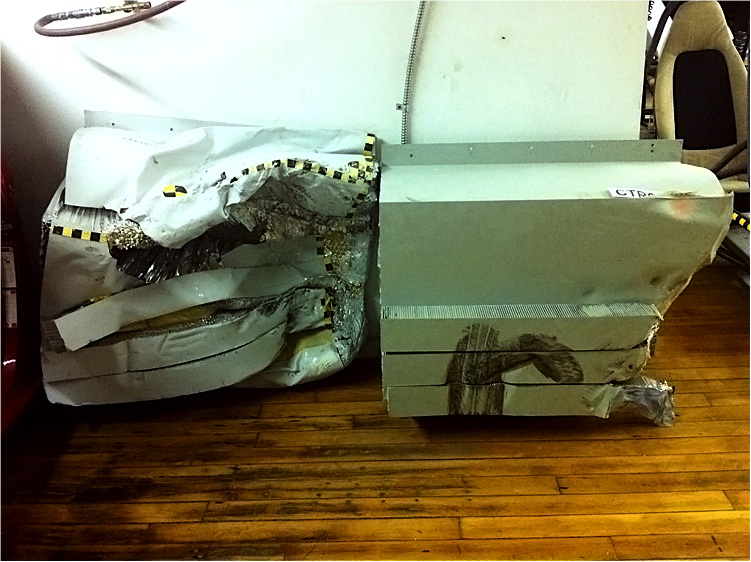Edison2 on Impact Avoidance: Float like a Butterfly, Sting like a Butterfly

It takes two to collide. But in official crash tests, only one vehicle is instrumented to measure impact forces and damage. What happens to the opposing car and the people inside it?
In accidents, people are killed by acceleration forces and how they arrive. Edison2 is very serious about occupant protection. Serious enough that we created a new automobile architecture which reduces these fatal forces by deflecting their crash energy. We recently achieved exceptional results in an official Insurance Institute for Highway Safety (IIHS) 40% offset head-on crash test. In that crash, the human test dummy in our Very Light Car experienced less than half the acceleration forces imparted by conventional cars with crash test ratings of “good”.
Because it’s designed to deflect crash energy, our VLC provided twice the protection in this IIHS test. Did we kill the dummies in the other car? That’s hard to answer with certainty because, as we said above, the opposing vehicle is not instrumented.
In fact, there is no another vehicle. In 40% offset head-on crash tests, the “opposing vehicle” is a standardized target made of aluminum honeycomb. When crashed into, this target deforms in a way that realistically and repeatedly mimics how the “opposing vehicle” is damaged. In the IIHS test, this target is mounted on a concrete block weighing 1000 tons. The test car is driven into the target at 40 mph, and the results are recorded by very precise instrumentation.
What isn’t recorded is what happens to the target, which for test purposes represents a real car with real people. But consider the evidence in our photograph: it shows two identical IIHS targets; the one on the left was hit by an ordinary compact car, the one on the right by a VLC. The difference is not subtle. The ordinary car absolutely slammed its opponent and the people inside it. In contrast, by deflecting away from the collision, the VLC protected its own occupants and, as our photo suggests, greatly reduced the impact suffered by people in the other car.
The phrase “float like a butterfly, sting like a bee” was invented by American boxing legend Muhammad Ali. And like Ali himself, the record-breaking efficiency, exceptional handling and crash deflecting design of our Very Light Car means it too floats like a butterfly – in all the right ways.
And if there’s an accident, the VLC does what the best conventional cars do, it protects the people inside. But it also provides a level of safety others can’t. These crash-test targets illustrate something unique to our VLC: it protects occupants without generating huge accelerations on the people in the opposing car. We float – and sting – like a butterfly.
It’s less well known but Muhammad Ali also said: “Service to others is the rent you pay for your room here on earth.” At Edison2, we do our best to pay rent in advance.


 Tuesday, April 2, 2013 at 10:02AM
Tuesday, April 2, 2013 at 10:02AM
Reader Comments (6)
That is amazing. I'm so looking forward to having one of these cars, and I like knowing that this safety feature is there even though I hope to never test it.
This is a compelling comparison and another virtue of the VLC's extraordinarily low mass.
But how would the situation change if the IIHS block was not fixed, but was backed by a 2-ton object traveling at 20 mph, with the VLC coming from the other direction at 20 mph?
See for example the following test, also performed by IIHS: http://www.youtube.com/watch?v=89gYxOmGtH4
That is all fine and good but virtually all safety outcomes, in actual situations, is mostly related to the operators manipulation of the steering wheel, breaks and other controls according to the traffic situation. Stay alert whether you are driving a battering ram or a butterfly.
why no posts in the last many many months?
I totally get good experience to read your post. You boost a communication skill in this phenomenal writing.
I think it would be more devastating if they used a real one instead of a test dummy. We'll never know..